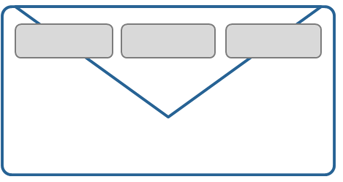Labelling emails in the source system
To ensure it is possible to evaluate individual emails, you must clearly label these emails in your source system. There are three different email header entries available to this end. These email header entries are read out by Inxmail Commerce during sending and provided for later evaluations in order to make it possible to connect evaluation data to an email.
Naming the email header entries
The email header entries must be named as follows: X-inx-correlationId1, X-inx-correlationId2, X-inx-correlationId3.
Transferred values
You can transfer any information to Inxmail Commerce for the unique labelling of the emails. The combination of all three email header entries must enable the clear identification of the email. One individual value may be sufficient in some cases, provided that this is sufficient for the clear identification of the email. This means that you do not have to use all email header entries.
Example
The example below shows an email header that contains three email header entries named: X-inx-correlationId1, X-inx-correlationId2, X-inx-correlationId3.
From: Your Shop <noreply@shop.invalid>
To: <important@inxmail.invalid>
Subject: Example Subject
Date: Tue, 11 Nov 2015 12:01:04 -0600
Reply-To: Shop Support <reply@shop.invalid>
x-job: 132689_67521028
Message-ID: <ce9e9049-2cc5-422e-be7d-dc45c91dcf5c@12354151.frqrqwee>
X-inx-correlationId1: Mustershop
X-inx-correlationId2: Beispielkampagne
X-inx-correlationId3: SampleId123
Content-Type: multipart/alternative; boundary="zr4JeApdxs0v=_?:"
Return-Path: bounce-287489-876666833-67521028-132689-6@bounce.shop.invalid
MIME-Version: 1.0

